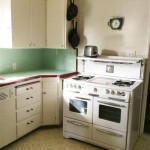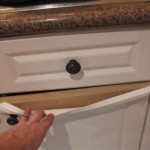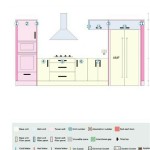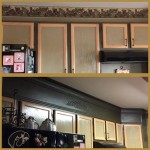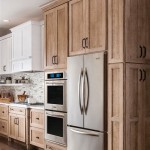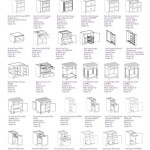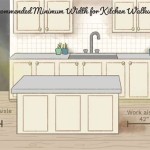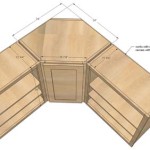What Is A Blind Corner Cabinet Used For In Kitchen Cabinets?
Blind corner cabinets are a common feature in many kitchen designs. They address the challenge of utilizing the space where two runs of cabinets meet at a 90-degree angle, forming a corner. Without a specific solution, this corner space often becomes difficult to access and is effectively wasted. A blind corner cabinet attempts to reclaim this area, offering storage that would otherwise be unusable. However, these cabinets present unique design considerations and functional limitations that homeowners and designers must understand.
The term "blind corner" refers to the characteristic of the cabinet design that includes an area hidden from direct view and physical reach without a special mechanism. This hidden area extends back into the corner and is normally inaccessible. The inherent difficulty in accessing items stored deep within the blind space necessitates thoughtful approaches to organization and storage solutions.
The primary purpose of a blind corner cabinet is to maximize storage potential in a kitchen layout, particularly in kitchens with L-shaped or U-shaped designs where corners are inevitable. Utilizing this space can free up valuable cabinet space elsewhere in the kitchen, improving overall functionality and organization.
Maximizing Storage Capacity in Awkward Spaces
Blind corner cabinets directly address the inefficiency of standard cabinet designs when confronted with kitchen corners. The inherent challenge lies in making the deep, recessed area of the corner accessible. Without a specialized solution, this area often becomes a dumping ground for infrequently used items, making retrieval difficult and leading to wasted space.
Traditional shelving within a blind corner cabinet can be used, but it typically results in a significant portion of the space remaining difficult to reach. Items stored at the back are often forgotten or require significant effort to retrieve, negating the benefit of having the storage space in the first place. Therefore, utilizing the full potential of a blind corner cabinet requires incorporating mechanisms that bring the contents of the cabinet out into accessible reach. This requires careful planning and consideration of the available options.
The effectiveness of maximizing storage capacity through blind corner cabinets is heavily reliant on the chosen hardware and accessories. Different solutions offer varying degrees of accessibility and storage efficiency. Understanding these nuances is crucial for homeowners seeking to optimize their kitchen storage.
Addressing Accessibility Challenges
The defining challenge of blind corner cabinets is accessibility. The deep, recessed nature of the corner makes it difficult to reach items stored within the cabinet, especially those located at the back. This inaccessibility can lead to frustration and underutilization of the space. Therefore, specialized hardware and design solutions are essential to overcome this challenge.
Several mechanisms have been developed to improve accessibility within blind corner cabinets. These include:
- Lazy Susans: Circular shelves that rotate, allowing easy access to items stored at the back. While simple and relatively inexpensive, lazy susans may not utilize the entire space efficiently due to their circular shape.
- Pull-Out Shelves: Shelves that slide out of the cabinet, bringing the contents within easy reach. These come in various configurations, including kidney-shaped shelves and multi-tiered systems.
- Swing-Out and Pull-Out Systems: More complex mechanisms that combine swinging and sliding motions to bring the entire contents of the cabinet out into the open. These systems often offer the best accessibility but can be more expensive and require more installation space.
The choice of accessibility solution depends on budget, the type of items being stored, and the available space within the cabinet. Careful consideration is needed to select the mechanism that best addresses the accessibility challenges and meets the specific needs of the user.
Beyond the mechanisms themselves, the organization of items within the blind corner cabinet is crucial for accessibility. Storing frequently used items at the front and less frequently used items at the back can help minimize the need to reach into the deep recesses of the cabinet.
Optimizing Kitchen Layout and Design
Blind corner cabinets play a significant role in optimizing kitchen layout and design, particularly in smaller kitchens where every inch of space is valuable. By effectively utilizing corner spaces, these cabinets can free up space in other areas of the kitchen, allowing for a more functional and efficient design.
When designing a kitchen with blind corner cabinets, several factors must be considered:
- Door Swing: The direction the cabinet door swings can impact accessibility and overall kitchen flow. Consider which direction is most convenient and least obstructive.
- Cabinet Dimensions: The dimensions of the blind corner cabinet should be carefully planned to maximize storage capacity while ensuring that it integrates seamlessly with the adjacent cabinets.
- Hardware Compatibility: Not all hardware solutions are compatible with all cabinet sizes and configurations. Ensure that the chosen hardware fits properly and functions as intended.
- Aesthetic Considerations: The design of the blind corner cabinet should complement the overall aesthetic of the kitchen. Consider the style, finish, and hardware of the cabinet to ensure a cohesive look.
The strategic placement of a blind corner cabinet can also impact the functionality of the surrounding areas. For example, placing a blind corner cabinet next to the sink or dishwasher can provide convenient storage for dishware and cleaning supplies. Alternatively, placing it near the cooking area can provide storage for pots, pans, and cooking utensils.
The decision to include a blind corner cabinet in a kitchen design should be based on a careful assessment of the available space, the desired storage capacity, and the overall layout of the kitchen. While these cabinets can be valuable additions, they are not always the best solution for every kitchen. In some cases, alternative corner cabinet designs, such as diagonal corner cabinets or corner drawers, may be more suitable.
Furthermore, proper installation of blind corner cabinets is critical to their functionality and longevity. Ensure that the cabinet is level and securely attached to the wall. Follow the manufacturer's instructions for installing the chosen hardware mechanism. A properly installed blind corner cabinet will provide years of reliable service and contribute to a more organized and efficient kitchen.
In the context of kitchen design, accessibility is a key principle, especially for individuals with mobility limitations. Blind corner cabinets, without appropriate mechanisms, can pose significant challenges. Design considerations should include pull-out shelves, swing-out systems or other adaptive features to promote universal accessibility.
Material selection for blind corner cabinets is also a crucial aspect. Durable materials that can withstand frequent use and potential moisture exposure are essential. High-quality wood, plywood, and moisture-resistant composites are common choices. The finish should also be durable and easy to clean, as blind corner cabinets are often used to store items that can spill or leak.
The long-term functionality of a blind corner cabinet depends on proper maintenance. Regularly cleaning the cabinet and keeping it organized will help prevent the buildup of clutter and ensure that the hardware mechanisms continue to function smoothly. Inspect the hardware periodically for signs of wear or damage and replace any worn or broken parts promptly.
Ultimately, the effectiveness of a blind corner cabinet lies in its ability to transform a traditionally underutilized space into a practical and accessible storage solution. By carefully considering the design, hardware, and organization of these cabinets, homeowners can maximize their kitchen's storage capacity and create a more functional and enjoyable cooking environment.

Blind Corner Cabinets Step By Guide On How To Install

Blind Corner Base Cabinet Dimensions Ultimate Guide 2025

Blind Corner Cabinet Ideas To Maximize Space

Blind Corner Accessories Info

How To Deal With The Blind Corner Kitchen Cabinet Live Simply Method

Ultimate Guide To Blind Corner Cabinets

Blind Corner Cabinets Step By Guide On How To Install

What Is A Blind Corner Cabinet The Homestud

How To Deal With The Blind Corner Kitchen Cabinet Live Simply Method

Kitchen Cabinets New Solutions For Blind Corners Of The Desert
Related Posts

